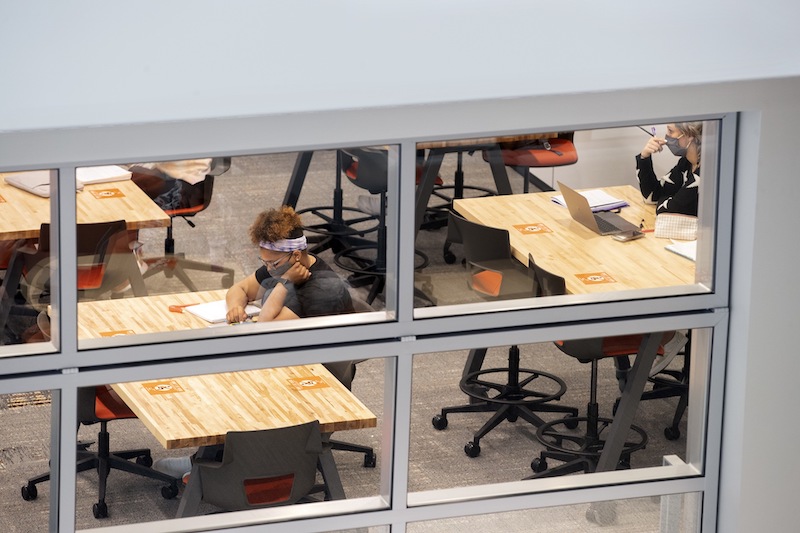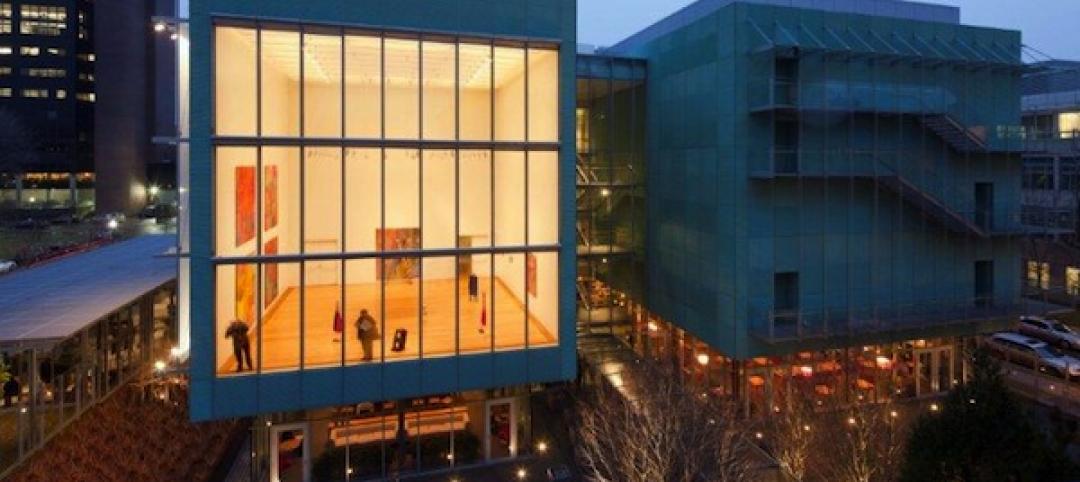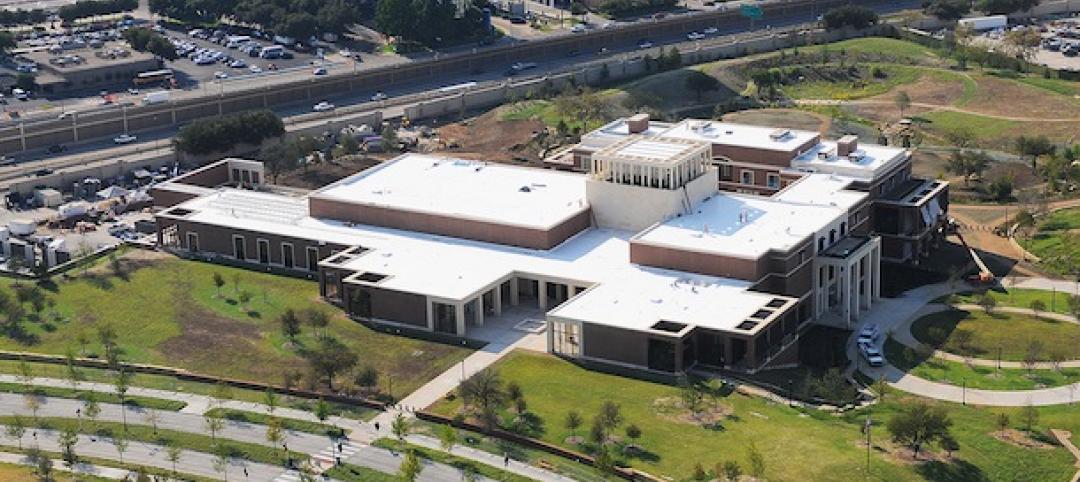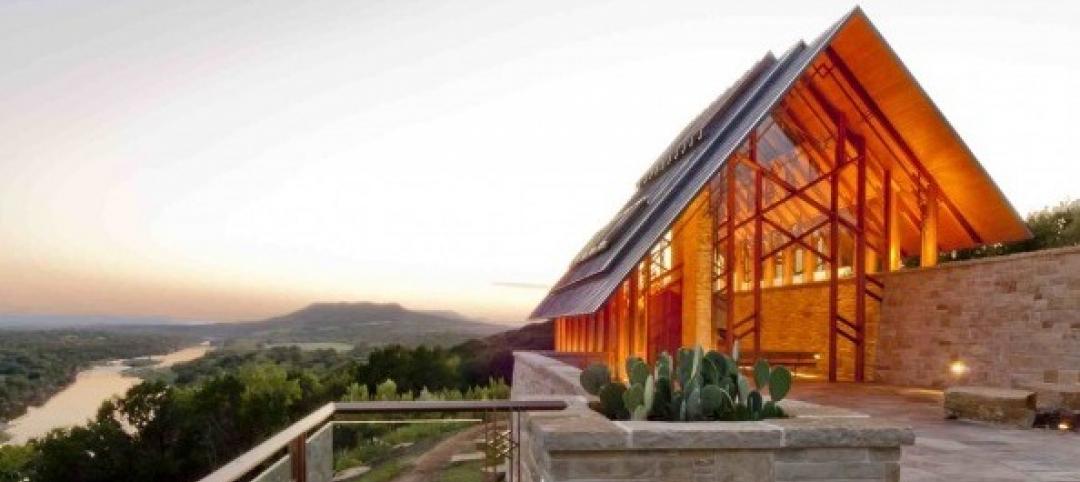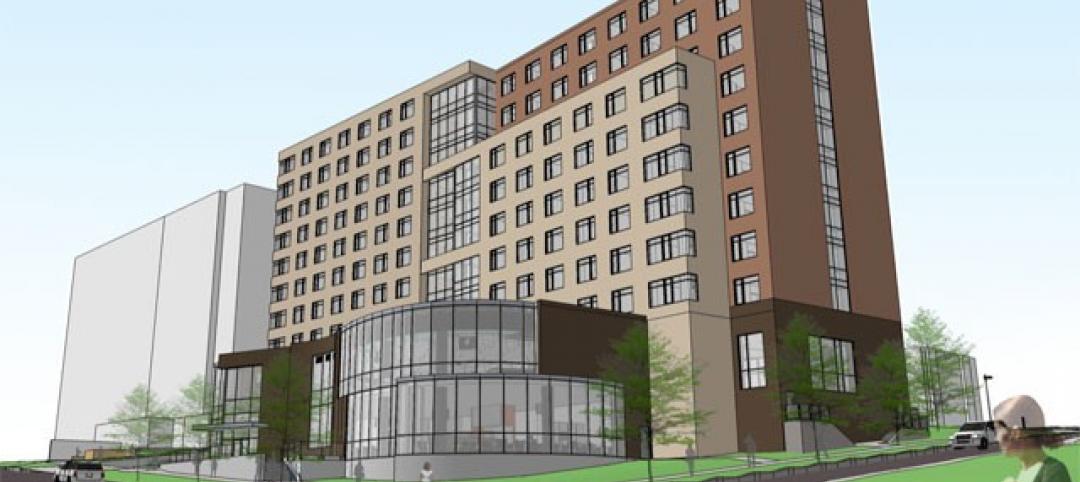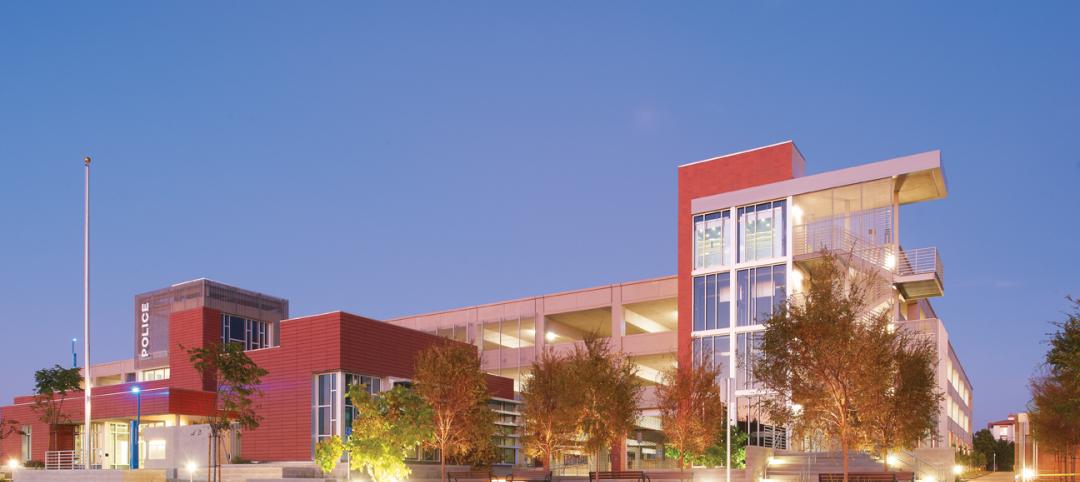Institutions of higher education are under more pressure than ever to demonstrate to students, their parents, and benefactors that a college diploma is worth more than the sheepskin it’s printed on.
To that end, a growing number of colleges and universities are aligning with the research, science, and business sectors that have more input into these schools’ programming, curricula, and even their built environments.
Case in point: In Ohio, Bowling Green State University’s recently opened Robert W. and Patricia A. Maurer Center, the new home for the school’s Allen W. and Carol M. Schmidthorst College of Business. This 50,000-sf building represents a new era for the college, an incubator for study and collaboration that resembles a modern workplace, with the goal of preparing students for real-world careers.
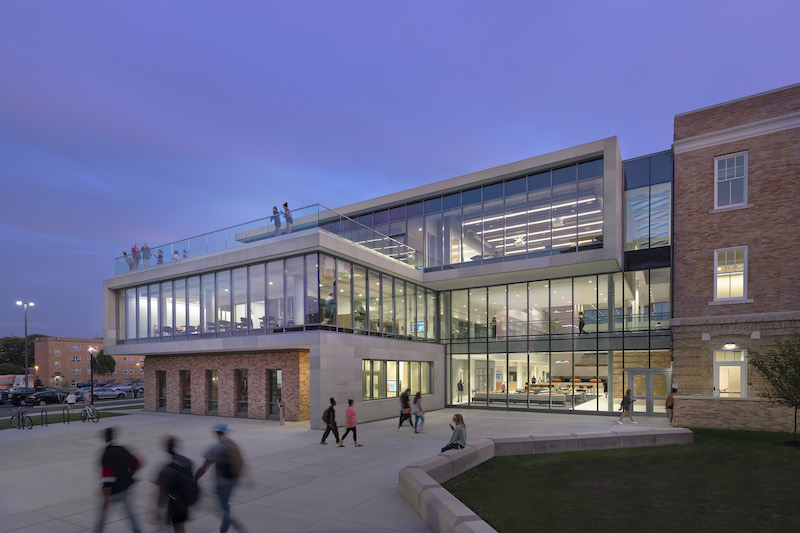
The 50,000-sf Maurer Center is designed to mimic a real-world work environment.
Bowling Green was a leader in this academic-business nexus even before Maurer Center was constructed, as more than 70% of its students have jobs by the time they graduate, says Jessica Figenholtz, AIA, LEED, Associate Principal and Higher Ed Lead with Perkins and Will, the design architect on this project. BD+C interviewed Figenholtz with P&W’s design principals Bryan Schabel and Joseph Connell.
The project’s Building Team included The Collaborative (AOR, construction administration, landscape), Mosser Construction (GC), Schaefer (SE), Wiss, Janney, Elstner Associates (building envelope) ESA Engineers (CE), and JDRM Engineering (ME engineer, technology).
A VARIETY OF STUDY ENVIRONS
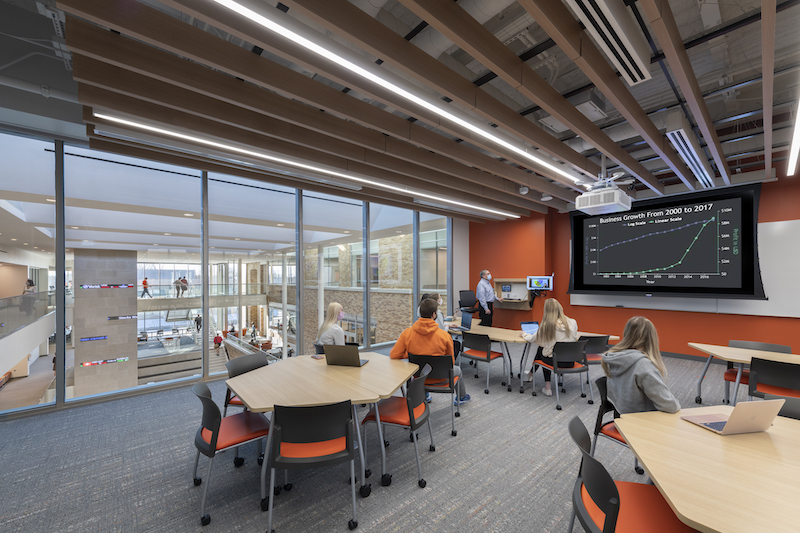
The building's classrooms and faculty offices are encased in glass for greater light and transparency.
The business school, which is currently in hybrid learning mode, had its ribbon cutting last September. It includes more than two dozen ways for students to work and study. There are meeting areas of different sizes and on different floors throughout the facility. The design team created a flexible kit of parts that can change as business needs change. Connell points out that the building’s first floor includes two maker spaces, one of which can expand to 2,200 sf, where students can pitch ideas to companies and investors within a combination lounge-conference room setting.
Classrooms with moveable walls and modular furniture allow students to work together easier. There are wall-less cut-out areas on each floor. Classrooms and faculty offices are enclosed by glass walls for greater accessibility and transparency. “The building is designed to create collisions and interactions,” says Schabel.
The biggest change was getting faculty out of their offices, “which required a change in mindset about thinking of offices as castles and places to hide,” says Connell. Figeholtz adds that College of Business Dean Raymond Braun, an attorney, “wanted to shake things up; he wanted the building to reflect the workplace.”
CENTER’S ATRIUM IS A MEETING HUB
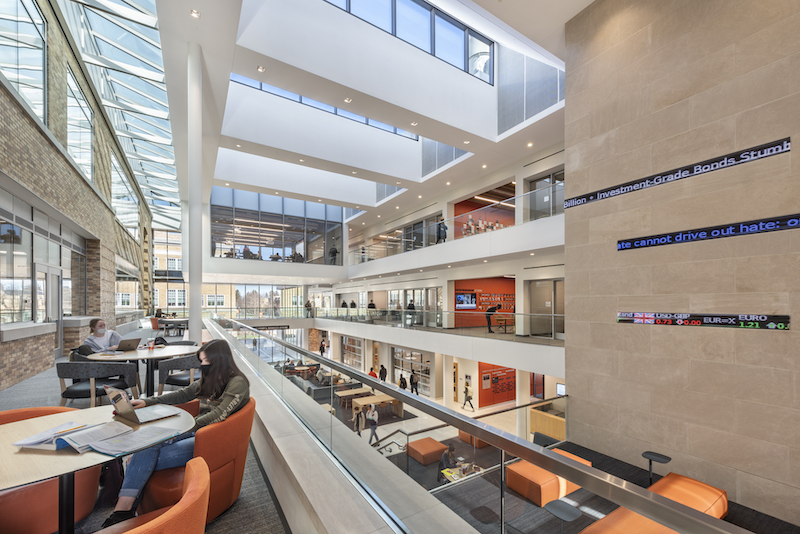
A three-story light-filled atrium includes two maker spaces where students can pitch ideas to investors. One of the atrium's walls is a preservation of adjacent Hanna Hall (below) that contrasts the business school's past and future.
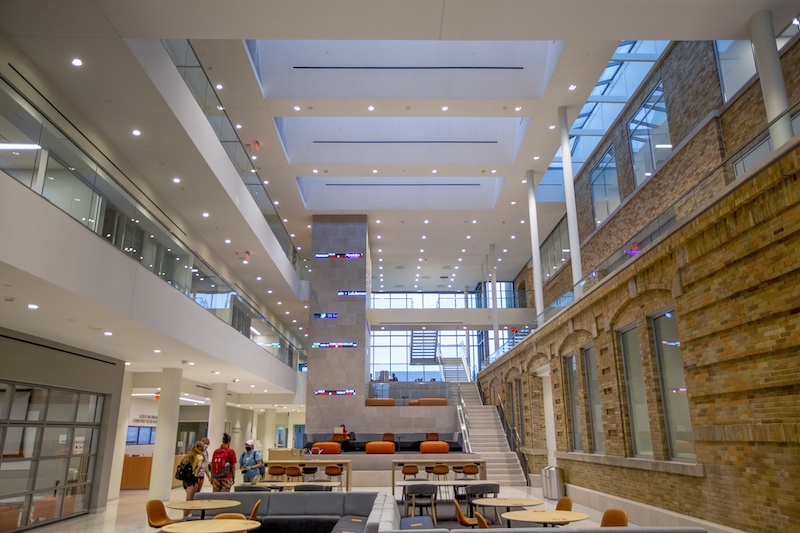
Among the prominent design features in the Maurer Center is its light-filled atrium, a hub that encourages a range of student interactions with peers, faculty and employers in stadium seating and terraced small-group meeting areas. The glazed north façade allows natural light to pour into the atrium.
On one side of the three-story atrium is the existing brick wall of Hanna Hall, an adjacent building that has been completely renovated. Connell says the wall was left standing as a “nod” to the school’ history and as a contrast to the Maurer Center.
The Center also features branding and imagery that tells Bowling Green’s story and its prospective future. “This storytelling is an important part of the recruitment experience,” says Connell. Central to the brand visuals is the business school’s focus on data analytics. A dynamic digital ticker embedded in the main stairway enclosure features the business school’s social media feeds and the latest business news.
This is a 24/7 building (first-floor Starbucks included, of course) that Figenholtz says students now perceive as “a place to be seen, day or night.”
Related Stories
| Feb 17, 2013
Suffolk University’s $62 million academic building gets the go-ahead
The Boston Redevelopment Authority board yesterday unanimously approved Suffolk University’s plans to move forward with a new campus building at 20 Somerset St. that will feature general-use and science classrooms, a light-filled cafeteria/function space, and indoor and outdoor lounging areas.
| Feb 15, 2013
Could the student housing boom lead to a bubble?
Student housing has been one of the bright spots in the multifamily construction sector in recent years. But experts say there should be cause for concern for oversupply in the market.
| Feb 8, 2013
Isabella Stewart Gardner Museum’s new wing voted Boston’s 'most beautiful new building'
Bostonians voted the Isabella Stewart Gardner Museum's new wing the People's Choice Award winner for 2012, honoring the project as the city's "most beautiful new building" for the calendar year. The new wing, designed by Renzo Piano and Stantec, beat out three other projects on the short list.
| Feb 6, 2013
George W. Bush Presidential Center among award-winning roofing projects honored by Sika Sarnafil
Winners of the 2012 Contractor Project of the Year Competition were announced this week by Sika Sarnafil. The annual competition highlights excellence in roofing installation. Roofing contractors are judged based on project complexity, design uniqueness, craftsmanship, and creative problem solving.
| Feb 5, 2013
8 eye-popping wood building projects
From 100-foot roof spans to novel reclaimed wood installations, the winners of the 2013 National Wood Design Awards push the envelope in wood design.
| Jan 2, 2013
Trends Report: New facilities enhance the quality of campus life
Colleges and universities are building state-of-the-art student unions, dining halls, and other non-academic buildings to enrich the campus experience, boost enrollment, and stay competitive.
| Nov 20, 2012
PC Construction completes Juniper Hall at Champlain College
Juniper Hall is on track for LEED Gold certification from the U.S. Green Building Council.
| Nov 13, 2012
Have colleges + universities gone too far with "Quality of Life" buildings?
We'd like your input - recent projects, photo/s, renderings, and expert insight - on an important article we're working on for our Jan 2013 issue
| Nov 11, 2012
Greenbuild 2012 Report: Higher Education
More and more colleges and universities see sustainainably designed buildings as a given
| Oct 24, 2012
Architecture firms NELSON and H2L2 announce merger
Architecture firms NELSON and H2L2 have combined operations, adding H2L2’s higher education and infrastructure practices to NELSON’s account management and service delivery platform, the Philadelphia-based companies announced.


